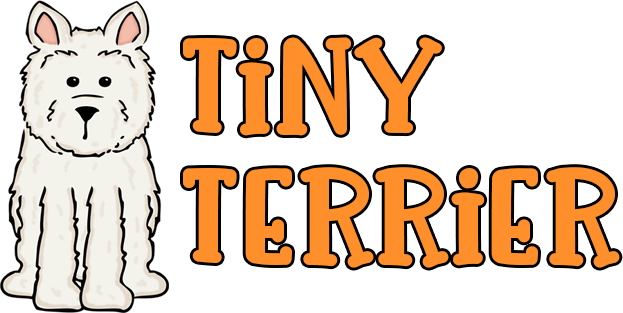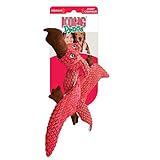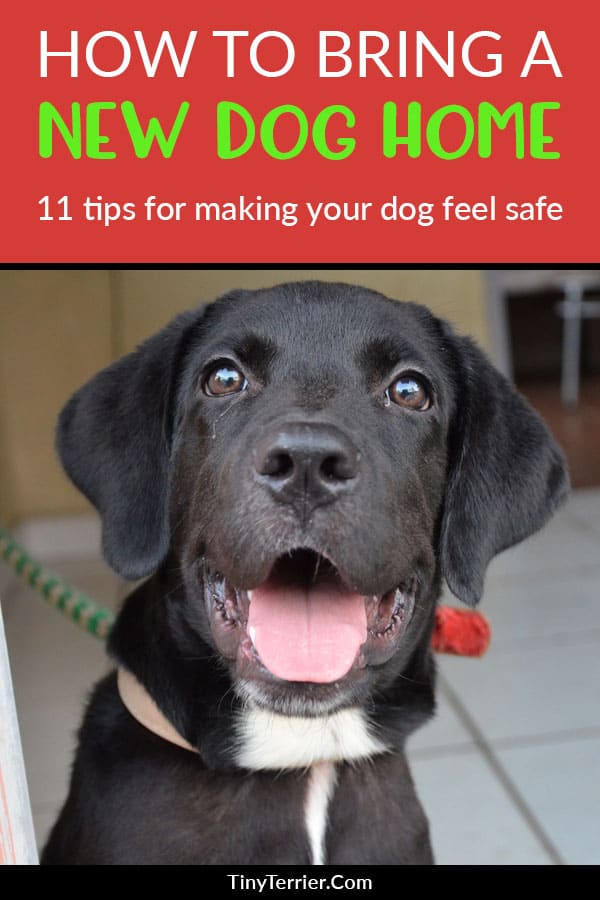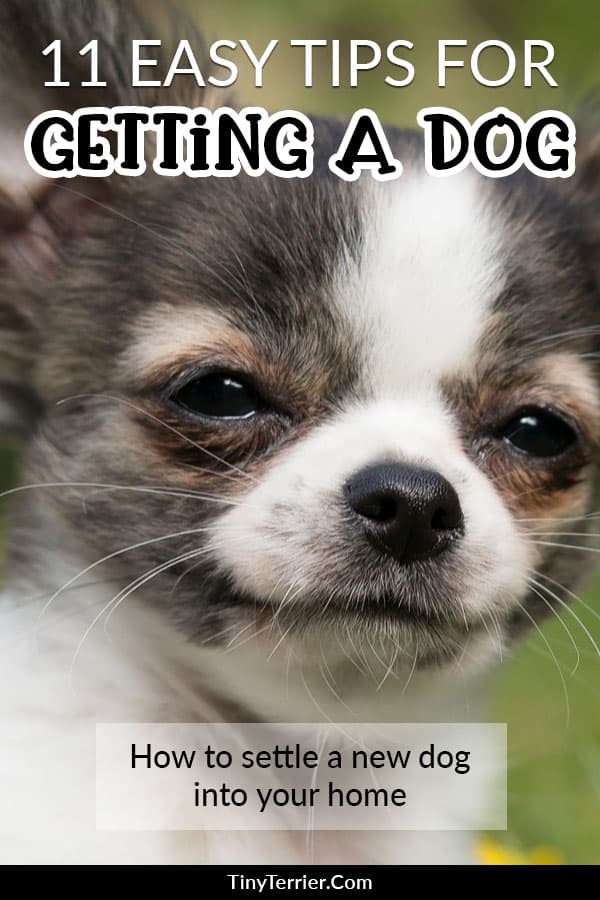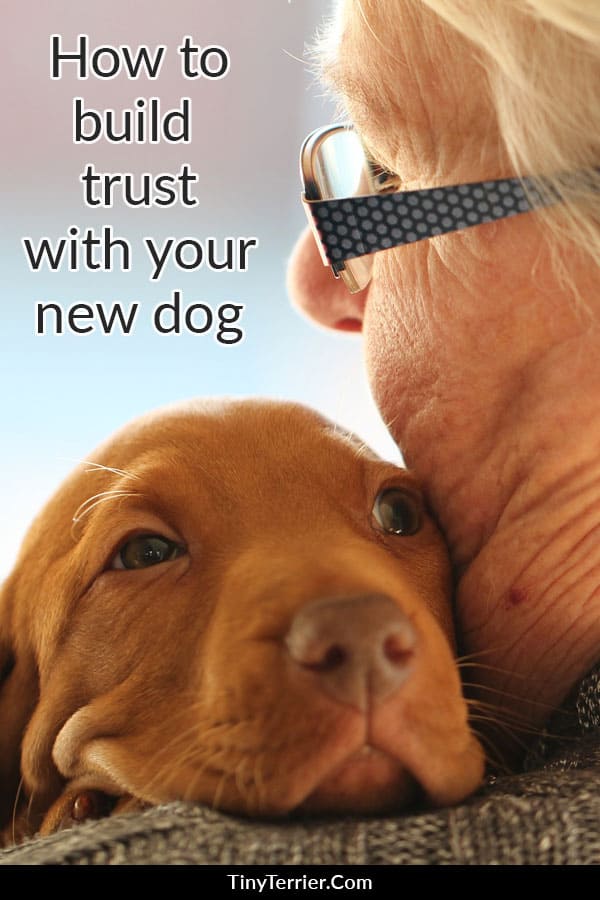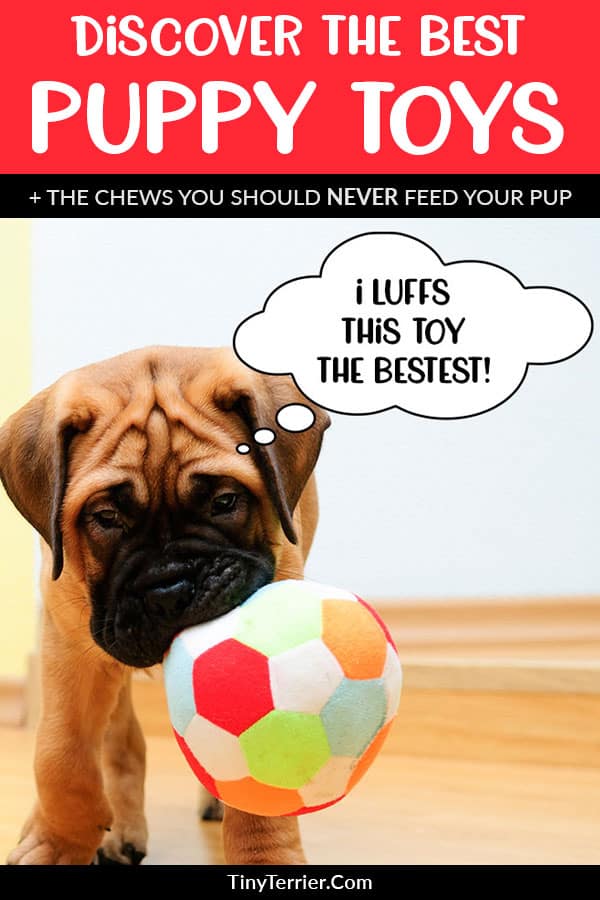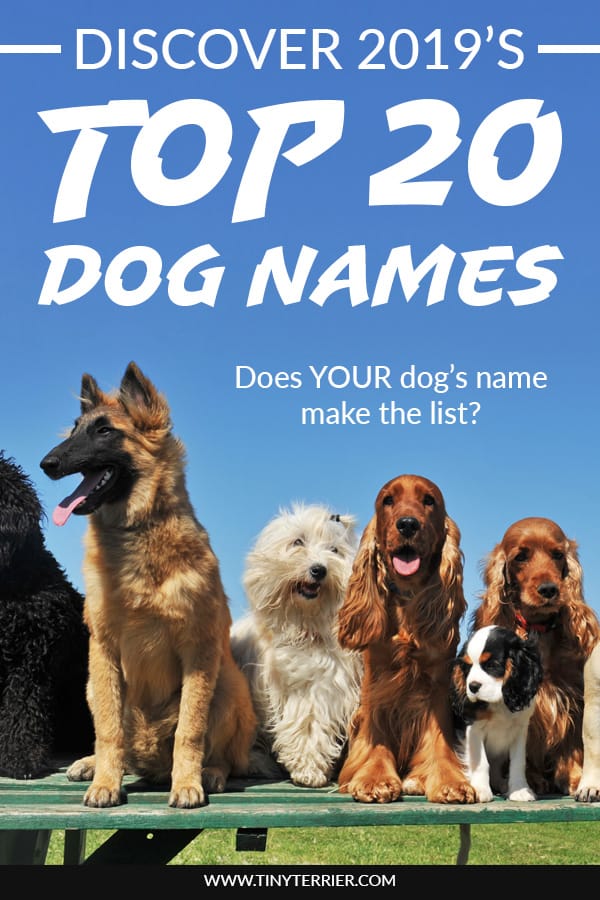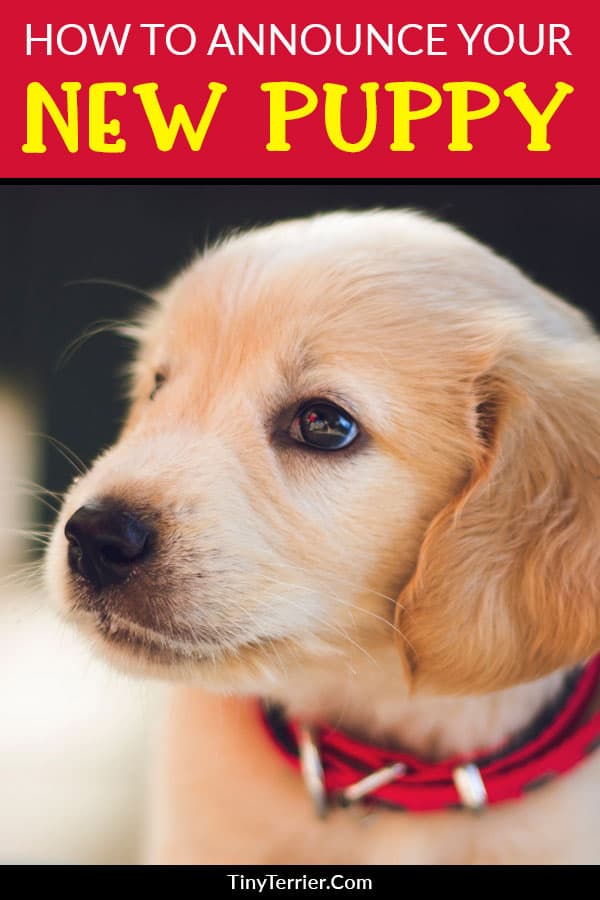11 Tips for Settling a New Dog into your Home
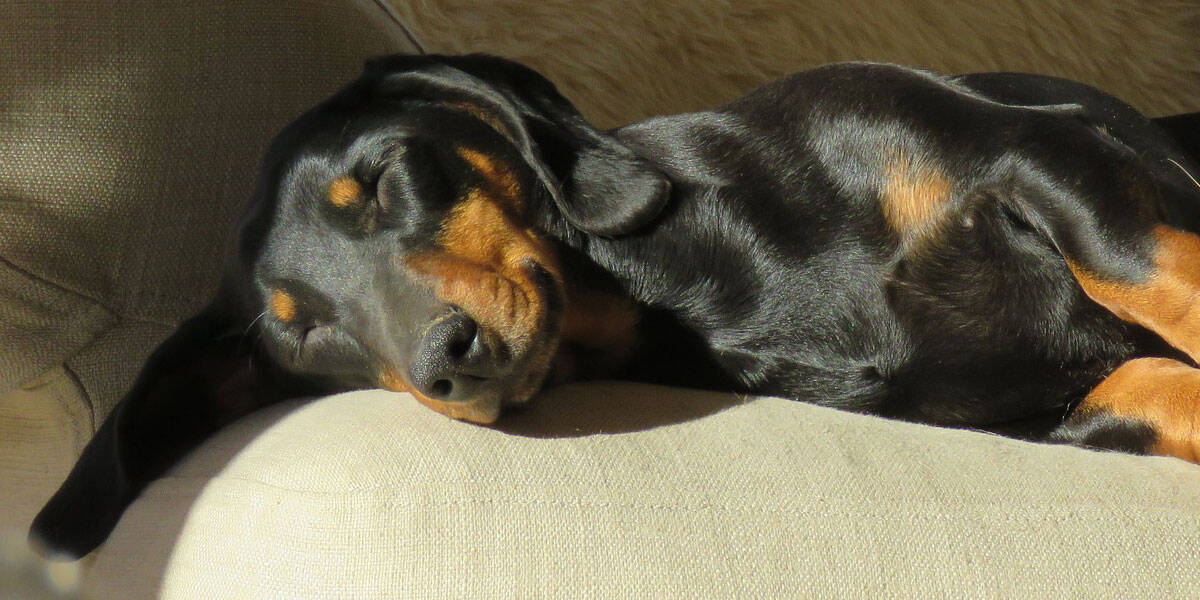
Updated on February 20th, 2019
When you bring a new dog home for the first time, it’s very exciting for you but can be terrifying for the dog.
You have taken them away from everything they know and put them into an unfamiliar environment.
Some dogs take everything in their stride and will be right at home almost immediately. Others may take a little longer to feel safe.
This can be particularly true of rescue dogs or dogs that have had a traumatic past. It may take these dogs anywhere from a few days to a several weeks or months to feel fully comfortable in your home.
There are some simple tricks you can do to help ease your new dog into family life. Here are some top tips for settling your new dog into your home.
Disclosure: This post contains affiliate links, which means that I will earn a commission if you click through and make a purchase (at no additional cost to you).
How to introduce a new dog to your home
1. Spend time with them before you bring them home
If possible, try to visit the dog at least once before you take them home – ideally a few times.
This gives them time to get to know you before you take them away from their current living environment. A dog that is comfortable in your presence before you bring them home may adapt better to the journey back and settle quicker into your family’s life.
If you can’t meet the dog before bringing them home then that isn’t the end of the world. It may just take a little more time to get them to trust you.
2. Give them time to explore
Entering a new house for the first time can be a daunting experience, particularly for nervous dogs.
When you bring your new dog through the front door for the first time, don’t immediately try to play with them or give them a cuddle.
Let them explore your house at their own pace. You may want to leave them on the lead for the first couple of minutes and walk with them around the rooms. Let your dog lead the way and follow them along for the exploration.
If you have had a long journey to get home, take them straight out into the garden to avoid them having an accident in your house!
If there are rooms that you don’t want the dog to go in (e.g. bedrooms) then be sure to close the door so that they can’t get in. This is much better than you shooing them out if they accidentally go into one of your ‘forbidden rooms’. You don’t want one of your dog’s first experiences with you to be a negative one – a simple closed door or stair gate eliminates this risk.
- Extra tall gate to make an effective barrier for pets
- Standard tested for children , Depth of gate frame 1.5 cm
- Patented-double locking system / pinch-free hinge
- Multiple extensions available 6.4cm, 12.9cm, 32.4cm to extend gate width up to 148cm
- Ships in Certified Frustration-Free Packaging
3. Create a place for them to feel safe
A massive change in environment can be a little overwhelming for some dogs and they may find themselves a little hiding spot to curl up in.
Try to avoid disturbing them too much from their ‘safe space’. It’s better to wait for them to be comfortable enough to leave it on their own rather then feel ‘forced’ out of their comfort zone.
When we first brought Freddie, our Shih Tzu puppy, home a few years ago he spent most of the first few days hiding underneath our sofa.
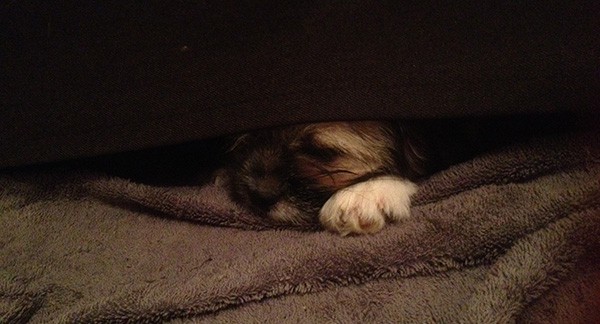
He felt safe there in the dark as the sofa covers go right to the floor. Apart from checking on him every now and then to make sure he was okay, we left him there until he felt confident enough to come out.
Gradually he started hiding less and less as he became more confident, and after a week or so he rarely went under there at all.
To this day, he still goes under the sofa when he feels unsafe such as when there are fireworks going off. He also likes to snooze there on a hot day – I guess it’s cooler!!
4. Let them have their own space
Even the most sociable dog occasionally needs some alone time.
If your new dog starts to withdraw from play or attention and lies down for a while, let them have a moment to themselves.
Make sure your dog knows where a dog bed is so that they can take themselves away if they feel like it’s all getting a bit too much.
Some dogs like to feel enclosed, so they may prefer a crate that they can hide away in until they feel like being sociable again.
5. Be calm and encouraging
I know that it’s super-exciting to finally have your pooch at home with you. However, try to reign in your emotions and keep calm around the dog. This will help them to feel more at ease and become more comfortable around you.
Likewise, if your dog has a toilet accident in the house, don’t shout at them. You can’t expect a dog of any age to be immediately toilet trained. They need time to figure out where they need to go and how to signal to you that it’s time for them to be let out in the garden.
6. Pick up on their signals
The settling in process applies to you and your family as much as it does to your dog.
Pay careful attention to the dog in the early days so that you get to learn their signals.
If your new dog is tired then they will be less likely to want to be fussed or play games. Watch out for warning signs such as growls or teeth baring. These aren’t necessarily signs that your dog is being aggressive. They are simply telling you that they want to be left alone for a while.
If you have children then it’s important that they know not to disturb the dog when he is eating, sleeping or in their bed/crate. Teach them this before the dog arrives so they know not to disturb them during those times.
7. Feed them tasty high-value treats
A fantastic way to get food-oriented dogs to trust you and settle in to your home is by feeding them!
High-value treats such as high-protein dog snacks, small pieces of cooked chicken or torn up slices of ham can win over most dogs!
- 100% Natural Real Venison
- This premium gourmet treat is made from quality venison fused with beef liver.
- Wheat, cereal and gluten free.
- Low in fat and high in protein
- Re-sealable bag
Be careful not to over-feed them as too many rich treats can cause an upset stomach.
Find out from the dog’s previous owner if they have a favourite treat and try to purchase some. This helps create a feel familiarity – and you know your dog likes the treats you are offering!
8. Separate other pets if it all gets too much
If moving to a new house is stressful, getting new roommates can be even more so!
You may need to separate your pets for a while if they start to become a bit growly or uncomfortable in each other’s presence.
Be sure to alternate which dogs you put in which rooms to avoid bad feelings. If you shut your existing dog away all the time they may start to resent the new dog which can cause them to pick fights or show other negative behaviours.
If you crate train your dogs, this can be a good time to put them in their (separate!) dog crates for a little while.
Be sure to keep the experience positive. Give them encouragement and treats as they go in. You don’t want either dog to associate the crates with negative experiences because then it will be difficult to get them to go in there and they may start to whine or bark when they are left in them.
9. Take them out on a walk
Taking your dog on a walk can be a wonderful way to build your bond with them and help them to feel settled. It has the added benefit of getting them tired, so they are more likely to have a bit of a sleep upon your return.
When my husband and I brought Socks, our second dog (also a Shih Tzu!) home we took him out on a walk straight away with Freddie.
I’m not sure if this was particularly the ‘best’ way to go about it, but it worked well for us. It allowed Freddie (who is occasionally reactive to other dogs) to become accustomed to him before he came in the house.
We had previously introduced the two as we brought Freddie with us when we went to visit Socks at his previous home, but that walk was great for the dogs to start getting used to each other.
Here’s a photo of them both together on the first day we got Socks – they look pretty happy together, don’t they?
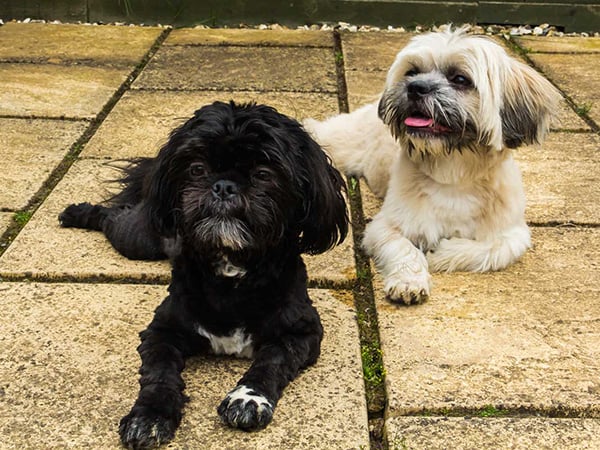
10. Allow them regular toilet breaks
I briefly mentioned this earlier but be sure to allow your dog regular toilet breaks.
For puppies this might mean taking them out into the garden every hour or so. You can spread this out a bit longer for older dogs who have previously been toilet trained.
Even the best toilet trained dog can have an accident in the house if they don’t know how to ask you to let them outside.
All dogs need time to learn where to go when they need the toilet, and how to get your attention so that you let them out.
Let your dog out regularly even if you don’t think they ‘need’ to go as it helps them to learn the layout of your house and where they need to pee.
If they do ‘go’ then give them positive praise to let them know that they’ve gone where they were supposed to!
11. Play games or let them play with a new toy
What says ‘welcome home’ better than a new toy?
Playing games with your dog may help them feel more settled. They get distracted from their environment and instead focus on the game you are playing with them.
It might be a good old-fashioned game of fetch in the garden, or perhaps playing with a tug-rope or squeaky toy.
- [MAKE SURE YOU BUY FROM UBESTWORLD AS OTHERS ARE NOT AUTHORIZED AND COULD NOT BE GUARANTEE!] ECOFRIENDLY DESIGN - Soft Made with less stuffing for less mess, these dog squeeze toys are ideal for cuddling and interactive play, and can be enjoyed indoors and out. Designed for long-lasting fun.
- MORE ENTERTAINMENT - The squeaker in the ball adds to the fun as the squeak helps entice play. And it continues to squeak even when the ball punctured.
- STAY HEALTHY - The knotted, cotton rope of this chew toy can clean teeth and can fresh your dog’s breath. Just play with your companion! No bad breath any more!
- OPTIONS AVAILABLE - There are 4 characters available for this squeaky dog toy: Hippo, Monkey, Buffalo and Rhino. We believe any one of them will provide your pet more fun!
- OUR SERVICE - Feel free to contact us if you have any questions. ubest will do our best to get your satisfaction. Our aim to offer fantastic service to all pet owners.
If you have another dog, be sure to give them a new toy too so they don’t feel left out.
Playtime is a great bonding experience for you and your dog and it gives you chance to learn more about them – for example what type of toys they like best and their playing style.
For example, Freddie will do anything for a football (even though they are pretty much the same size as him!). Socks is obsessed with anything fluffy that squeaks. Here he is with his absolute favourite toy of all time which is a Kong Pterodactyl.
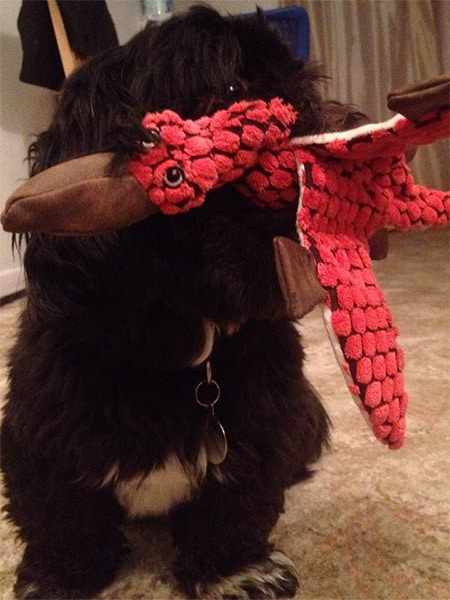
- Reinforced lining for strength
- Varied textures to entice play
- Squeaks and crinkles for added fun
- Available in four characters: T-Rex, Stegosaurus, Triceratops and Pterodactyl
